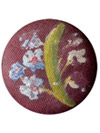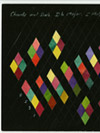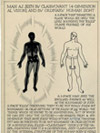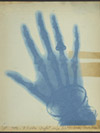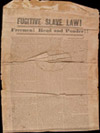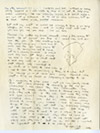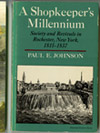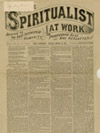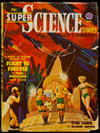By Rachel Goldstein
Nurturing Inquiry, a new exhibit in the University of Rochester's Department of Rare Books and Special Collections, highlights scholars from across disciplines, colleges, and countries in celebration of the journey of research. The exhibit unearths the challenges and rewards involved in navigating the research process, while showcasing an assortment of rare and specialized materials.
A recurring theme among students who are doing research for the first time is the thrill of using fragile historical manuscripts. "This is different from seeing a JPEG," says co-curator Abby Glogower. "You're holding a letter that Frederick Douglass wrote to his friend asking her to buy his freedom," Glogower explains. "And you can hold it? That's amazing." From letters, illustrations, and luncheon menus, to books, brochures and buttons, these resources have led curious minds down converging and often diverging paths of exploration.
The exhibit, on view through February 2014, is the product of many researchers and a great breadth of collaboration. Glogower is one of five co-curators for the exhibit. A doctoral student in visual and cultural studies, she was motivated by a desire for increased camaraderie among scholars.
"Researchers have to wrestle with, process, and synthesize material into things like term papers, conference papers, and dissertations," Glogower explains. "We sometimes work in solitary bubbles, and yet we are all going through the same kinds of motions and challenges." One goal of the exhibit is to highlight aspects of community in a field where researchers are often viewed in isolation.
"What I've noticed is the serendipity of discovery," says co-curator Lori Birrell, curator of Historical Manuscripts Collections. "Researchers are in the reading room, somewhat in isolation, but then they will turn to the person next to them and say, 'hey can you help me figure this out,' or 'can you give me a hand with this?' It's that sort of personal connection that leads to the discovery."
For each research project highlighted in the exhibit, three components are presented: the historical material investigated, a reflection written by the researcher about his or her experience working with that raw material, and a final product, such as a book or paper. Research is often a tedious, messy process of grappling with voices of the past and transcribing manuscripts—a system of decoding handwriting. Nevertheless the show manages to lay out the research pieces in a coherent, visual display.
Upon entering the exhibit, visitors will find large reproductions of manuscripts lining the walls. By transcribing some of the letters displayed, visitors assume the role of detective and can actively engage in the material to acquire greater insight regarding historical events. "It's powerful to walk through handwriting," says Birrell, "to walk through time."
Past the grand entrance, the display introduces research by Claude Bragdon, known for his work in architecture. "His work is visually stunning," says Travis Johansen, exhibit manager. "The idea is to be sucked in by the colors, visually hooked into the exhibit." After a look at work by Bragdon and other architects, the show flows into research focused on Frederick Douglass and Susan B. Anthony, and then snakes around to other studies ranging from lead poisoning mobilization and pulp fiction, to Senator Mary Anne Krupsak's campaigns.
"One unifying theme is that we have collections that are just ripe for research," explains Phyllis Andrews, curator of modern literature collections. "The diversity is part of the charm." Some of the most impressive items on display include meeting minutes from a women's rights conference in 1848 and a letter from Frederick Douglass to Anna Richardson in 1846.
Researchers approach Special Collections for a variety of reasons—dissertations, independent research, archive projects, or classes—and for a wider range of purpose. In fact, part of what the exhibit reveals is the non-linear nature of research and the way in which researchers working with similar historical materials will often produce very different results.
One student, reflecting on her research experience for a class, paints a picture of the past and present entwined: in one moment, she and her friends are watching TV on a Sunday afternoon, and in another, they are sitting around the kitchen table transcribing Anthony's work together. "It's such an incredible picture of modern student life that you don't think exists," Glogower says. The reflections scattered throughout the exhibit are moving; they describe the power of research in the humanities and value of interacting with rare historical manuscripts and books.
"The process of doing research compels students in particular to slow down," Birrell explains. "There is no shortcut. You can't just push a button. You have to have that tactile experience. And when you take the time to work with someone to transcribe a letter, it's not 30 seconds, it's a half an hour, forty minutes of time, but all that you experience within those moments? It's incredible."
An opening reception will take place at 5 p.m. on Tuesday, Nov. 12. The exhibit will be on view until Feb. 28, 2014 and can be viewed in the Rare Books and Special Collections Department on the 2nd floor of Rush Rhees Library, Monday through Friday from 9 a.m. to 5 p.m. For Saturday hours, please call the department at (585) 275-4477

